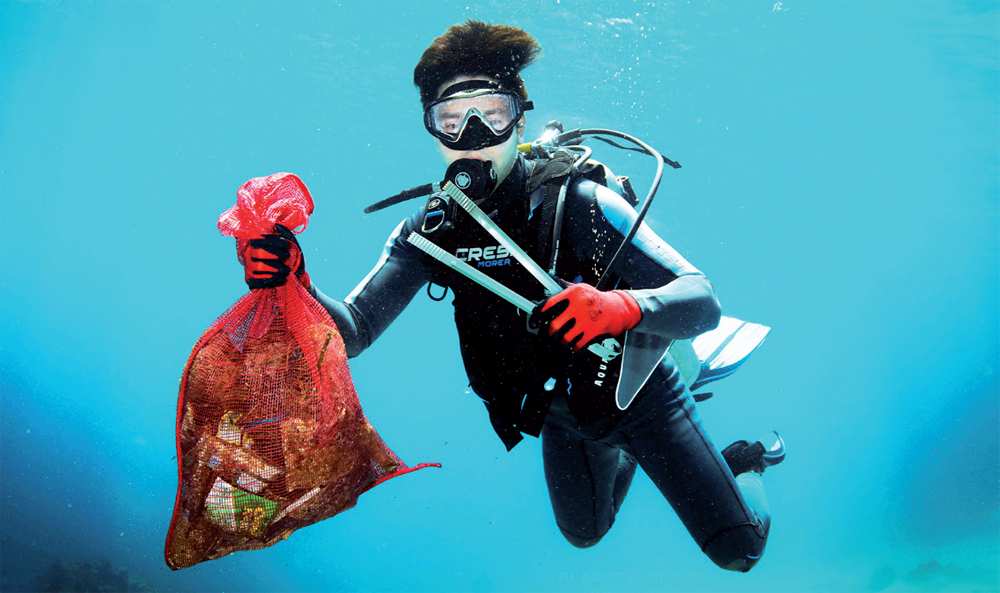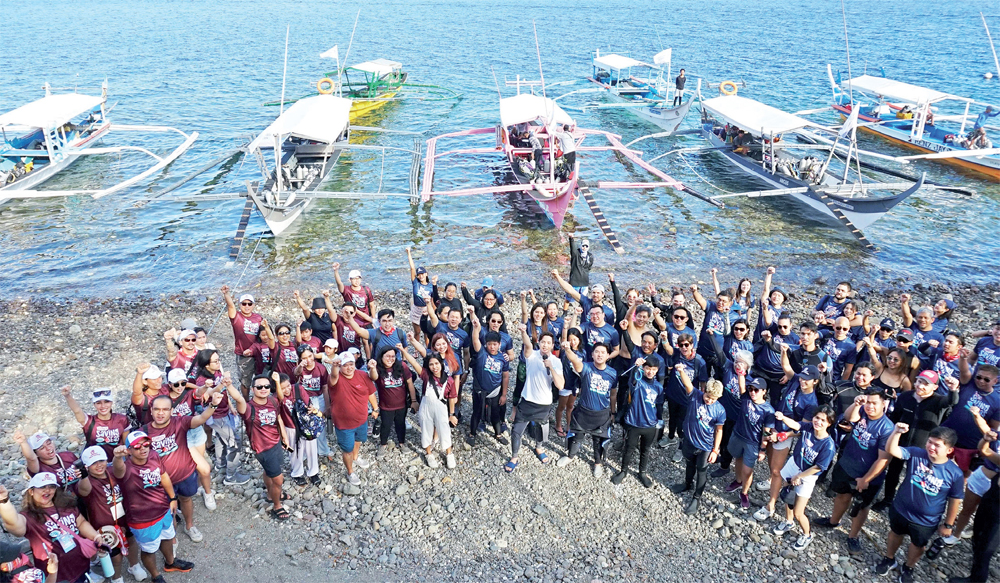THE Philippine is known for its pristine beaches and crystal-clear waters. It is, in fact, one of the 18 mega-biodiverse countries in the world. Unfortunately, it is also one of the top marine polluter countries.
Thirty six percent of plastic ocean waste in the world comes from the Philippines, while 35 percent of plastic consumption in the Philippines can reach its marine environment.
Each year, thousands of marine life ingest plastics, dying as a result. Around 52 percent of sea turtles globally have ingested plastic debris and it only takes 14 pieces of plastic to increase by 50 percent their chances of dying.
If we don’t act, things will get worse.
In just 30 years, half of the Philippines’ coral reefs have been destroyed. Studies say that we only have until 2050 to save 90 percent of the world’s coral reefs, or we will face the extreme effects of climate change.
This is why Century Tuna, the leading canned tuna brand in the Philippines, partnered with HOPE to initiate the Saving Our Seas program and help prevent plastic pollution.
The event had 212 clean-up volunteers, who were able to fill 156 trash bags and collect 805.4 kilograms of trash. The clean-up also had 12 boats, 75 scuba divers, and 22 freed divers, not to mention the dive instructors, divemasters and underwater photographers and videographers.
Every year, Century Tuna targets to collect more than 10 metric tons of plastic but all these fall short of the goal. So it urges everyone to take part in solving the crisis, in the fight to save the seas, and make the plastic circular economy a reality.
Carlo Endaya, vice president and general manager of Century Pacific Food Inc. Branded Tuna Business, said that what is more important aside from collecting the plastic, is to spread the message “that all of us can do our part.”
“The reason why Century Tuna has always been number one, is that for us it’s all about building the equity of health. We know that people want to be healthy. At the same time, we want to build a very strong tuna brand and do it sustainably,” Endaya explained.
“Tuna comes from the sea and ocean; Century Tuna aims to fish sustainably, and one of the things that we are doing to make sure that we are fishing sustainably is to help the environment,” he added.

“We cannot have healthy bodies if we do not have a healthy environment, so what we are trying to do is to make sure that we remove anything that makes the sea unhealthy,” he pointed out.
Leo Po, director and treasurer of Century Pacific Food Inc., said what the company aims is to inspire more, and what everyone did in the event was important for the world.
Alden Richards, brand ambassador of Century Tuna, said it was his first-ever clean-up drive participation. In the event, he dived not for leisure but to save the planet, especially the seas.
“When Century Tuna came to me and asked if I could participate, I immediately said yes because our problem with regard to waste management is getting bigger and more serious. This global crisis causes damage to a lot of things; I think this is a great step, a good initiative from the Century Tuna group to be able to conduct an event like this,” Richards added.
The move to a circular economy of plastic starts with initiatives like the HOPE’s Aling Tindera Plastic Palit Pera program.
Ilusion Farias, managing director of HOPE, an impact organization, discussed what their organization is doing with Century Tuna, and talked about the Aling Tindera.
Plastic bottles have a price, so people pick them up and sell them. What the organization wanted to do was to create the same mechanism for some other plastics.
People can earn money depending on the type and quantity of the plastic by dropping off their plastic waste at Aling Tindera, which will collect and bring the plastics to accredited processors that can turn them into useful items.
Farias explained that Aling Tindera aims to provide an avenue where people can monetize plastic bottles. She said it encourages discipline in the treatment of poor-consumer plastics.
She also added that it reduces leakage into the environment, as well as educate on the benefits of waste management processes.
The Aling Tindera program formalizes and organizes informal waste collectors to facilitate clean-up in communities around the Philippines.
Farias mentioned the program benefits include increased income and opportunities for women and communities, a more organized informal sector of waste collectors, cleaner surroundings, improved health of the community, and local government unit savings and compliance with R.A. 9003.
HOPE has 118 active Aling Tindera sites. It was able to collect more than one million plastics and give over P2 million of cash to communities.
The Century Tuna’s Saving Our Seas program launch and beach clean-up drive was held in Anilao, Batangas. Ian Bueno, HRMO tourism officer and coastal resources management officer, said that Anilao’s amount of waste increases because it is a catch basin.

In the town, Bueno, who shared at the briefing what the participants needed to do before, during and after the clean-up, said they always conduct coastal clean-ups because the sea is where their townspeople find their livelihood and sustenance, and serves as their playground as well.
Dive instructor Avic Maramot, who said their team prepared the event for almost a month, noted that the participants were divided into four groups: Mainit shore cleaners (non-divers), reef cleaners (scuba divers), Caban Cove shore cleaners, and makers of spill boom — a piece of kawayan (bamboo) which is covered with a linen that floats naturally and absorbs the oil spill — to contain the Oriental Mindoro oil spill
For his part, Bobby Suntay, president of SEA Institute for Verde Island Passage and member of National Advisory Council of WWF Philippines, tackled why the Verde Island Passage is a very important place.
Suntay cited that in 2005, Kent Carpenter and Vic Springer discovered that the “center of the center of marine shore fish biodiversity” was in the Philippines and is found in the Verde Island Passage.
Carpenter cited the seven most widely accepted factors that determine whether the area is biodiverse or not.
“Only the Philippines has all the seven reasons, and that is what makes us the ‘bull’s eye within the bull’s eye’. That is why we are doing clean-ups and protecting the area because we are important not only to the country but also the entire planet,” Suntay added.





